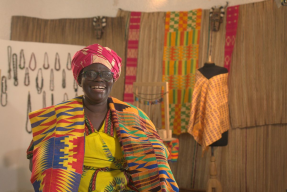
After four months at ground zero, I hold certain things to be true. There will always be a tradeoff between quality and quantity. Also, sustainable aid does not include giving money away. Microfinance, which encompasses interest bearing loans, is currently a lead contender for sustainable development. Perhaps that is why it has peaked the interests of so many. And until most recently, I was concerned its current state was not sustainable. Why? Many MFIs are experiencing double digit percentage gains and hitting numbers that make any for-profit enterprise envious.
However, growth is being achieved through volume via mass recruitment and market penetration. But like all great strategies, it must one day adapt to a new environment and reality. In places such as India and Cambodia, there are rumors of oversaturation, causing infighting amongst MFIs and NGOs to help the same clients (check this out). Although likely over-hyped, how could such a rumor even surface?
A focus on quantity over quality may also lead to tunnel vision focus, silo efforts, and in the worse case deviation from social mission/impact. Not to say that focusing on quality doesn’t come without its own criticisms. Instead, a balance between the two is necessary. Luckily, some are beginning to recognize that volume alone isn’t going to cut it seven years from now. Though at times difficult to find info, I am happy to communicate that reflection, research, and refinement are all occurring in the field. Previously, I had concerns that microfinance would hit a wall once the current strategy dried up. The items below are on the fringe of potentially great endeavors and worth sharing:
Kiva green loans – Kiva is now offering the world a chance not only to lend but change consumer consumption behavior for the better. Click here.
Vittana education loans – The notion of higher education loans doesn’t exist in most countries. Vittana helps fund students through their last years of college which ultimately increases the chances of escaping poverty. Click here.
Intra-Country Collaboration – MFIs in Vietnam have an informal forum to share their experience, collaborate on initiatives, and present a unified voice for the advancement of microfinance. Click here.
Currency hedging – Currency rates can be highly variable in some countries. With the ability to lend in any currency through hedging, the pool of funds available to MFIs should increase. Click here.
Equity and technical aid duo – Insitor Fund looks for businesses having a social impact component. In some cases it provides both seed capital and capacity building. And in other instances, they work directly with locals to identify the needs and subsequently help start a business to address those needs. Click here.
Diversified service offering – An mutually reinforcing institution (MRI) in the Philippines, CARD MRI, has built multiple business lines to provide a range of services. CARD consists of an MFI, a bank that lends to small/medium enterprises (SMEs), an NGO, a microinsurance fund, and a center offering training and best practices to support other MFIs. With so many offerings, it is fully scalable and should be self-sustainable across different economic environments. Click here.
Direct retailing – A clothing label with factories in a developing country is looking to sell its clothing directly to the country’s citizens. A feasibility study is currently being conducted with assistance from MFIs. So how would it work? Entrepreneurs with a clothing store would take a loan to buy inventory and be exclusive carriers of the label. The clothing would be sold at local prices since they are locally produced. Essentially these entrepreneurs would serve as retail stores for the label without the fixed, overhead, or startup costs of building a store. No links as I can’t give away who this is at the moment.
And with that I sleep just a tad better each night.
By Alex Duong, KF9, Vietnam
Interested in becoming a Kiva fellow? Click here.
Join the Vietnam lending team here.
Alex Duong is the first Kiva Fellow (KF9) working with TYM Fund in Hanoi, Vietnam. Click here for info on TYM Fund.
PREVIOUS ARTICLE
Borders, borrowers and the art of connection →NEXT ARTICLE
When Cows Attack (with video)! →













